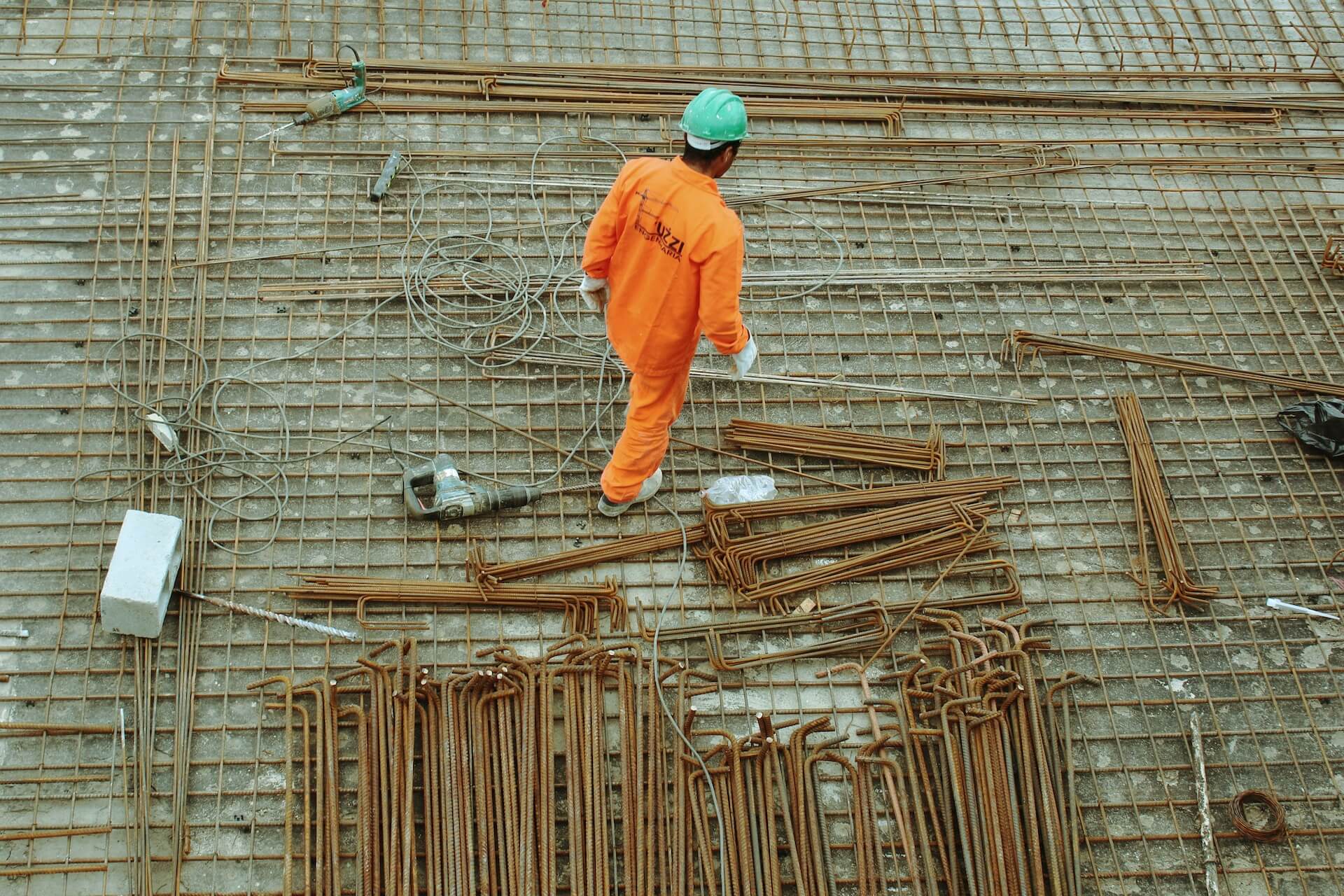
Accidents at work – Major risks for business
Work is an indispensable activity for modern society, due to the benefits it brings. Unfortunately, there are certain circumstances in which, during working hours, employees may go through unwanted incidents, which result in more or less serious injuries or other types of workers’ health. These events, known as workplace accidents, are quite frequent in certain fields, and their consequences can be some of the most serious. For this reason, business administrators must be closely familiar with the information regarding them and, above all, take the appropriate measures to avoid them or, if they occur, to limit the complex consequences.
In the article below, you will find out what accidents are at work and what are the main types of events that occur during working hours. You will also discover the effective ways to prevent accidents at work and why a specialized insurance in this sense is a real help both for the company and for its employees.
1. What are workplace accidents

Unwanted events are part of everyday reality. Regardless of the efforts made, it is not possible to take all precautions regarding the occurrence of circumstances that may have more or less serious consequences on the physical integrity of those who carry out a work activity.
Thus, accidents at work can occur in almost all fields of activity. Considering the seriousness of such events, there is a specialized legislation and institutions of the Romanian state that supervise the work and that try to apply the necessary measures to reduce the risk in this sense.
1.1. Definition of workplace accidents
The legislation of the Romanian state defines an accident at the workplace either in the form of a violent injury to the body of an employee, or through his acute intoxication. An event of this kind can be considered an accident at the workplace if it meets several characteristics specified in the legislation:
- The event must take place during the job, within the work process or when certain work duties are being performed;
- The work accident must cause temporary incapacity for work for at least three calendar days;
- The event results in the disability or death of one or more employees;
- An accident at work is also considered the occurrence of an occupational disease or a disease related to the job.
1.2. Types of workplace accidents
The risks of accidents at work are not the same in all fields of activity. There are some economic branches in which the susceptibility of the occurrence of events that damage the integrity of employees is higher. Examples in this sense are represented by the field of constructions, that of building maintenance, in the chemical or metallurgical industry, as well as where complex and difficult-to-handle machines and equipment are frequently used.
Among the most common types of work accidents are:
- Improper use of equipment can result in serious injuries or even death. Limb amputations most often occur when workers do not follow the instructions for using the machines;
- Falls from height usually occur in the construction industry due to non-compliance with safety rules (lack of safety equipment). Such accidents result in fractures, head trauma or even death;
- Exposure to dangerous substances is found in the chemical industry and in the pharmaceutical industry. This is where poisoning and chemical burns can occur;
- Accidents on public roads occur when employees have the task of driving various machines and are involved in such incidents. The consequences can range from mild ones (fractures) to serious ones (polytraumas, death);
- Falling heavy objects can be found in the field of construction.
The above industries are more exposed to risks, but accidents of this kind can occur in any workplace (office, school, hotel industry, etc.).
1.3. The procedure to be applied in case of a work accident
In the event of an accident at work, employers are obliged to carry out a precise procedure, which can be found in the legislation regarding safety and health at work. If this step is not fulfilled, the consequences can be serious, from simple fines to the preparation of criminal files for negligence in the service.
When an incident is observed that can be considered an accident at the workplace, the employer has the obligation to follow the steps below:
- Communication of the events to the territorial labor inspectorate of the respective county. In the communication, information will be provided regarding the identification data of the employer, the place and time when the event occurred, the identification data of the victim, the circumstances in which the accident occurred, its consequences and the health facility where was transported to the injured person;
- The employer must take measures to preserve the actual situation in the area where the incident took place in order to carry out a correct inspection. If the changes are mandatory to avoid other damages, then it is advisable to take some photos or some sketches before carrying out any steps;
- The employer is obliged to facilitate inspections by state bodies and to carry out its own investigation of the events;
- The employer is obliged to draw up a report of the investigation of the event;
- Occupational accidents must be registered in records.
2. Prevention of accidents at work

Accidents at the workplace can be extremely serious events, with significant consequences, both for the victims and for the business. The best solution is to take precautions to avoid workplace accidents. Efforts must be directed towards the identification of risks so that it is possible to take measures to minimize them and towards educating the workforce in order to use protective equipment and to respect the instructions regarding the handling of some tools and machines.
2.1. Identification and assessment of accident risks at the workplace
Any employer, regardless of the field in which they operate, must carry out a complete risk assessment before the workers go to actual work. The approach is possible through your own effort or with the help of occupational safety specialists. After identifying these risks, it is possible to take some measures to reduce or eliminate them entirely. This process takes place in several essential steps:
- Evaluation of work activities and processes (all those activities and elements that can influence worker safety are taken into account);
- Following the assessment, potential sources of risk can be identified (dangerous machines or equipment, slippery surfaces, dangerous environmental factors, excessive physical loads or very stressful work);
- Evaluation of the probability of each identified risk (the step is essential for prioritizing prevention and protection measures, i.e. riskier activities will be addressed first);
- Calling on occupational health and safety specialists, who can additionally contribute to taking appropriate measures;
- Development and implementation of prevention and protection measures (training of workers, use of protective equipment, modification of the work environment, etc.);
- Monitoring and constant review of prevention measures.
2.2. Use of personal protective equipment to avoid accidents at the workplace
Personal protective equipment has proven to be of real help in avoiding workplace accidents or in limiting their effects. The occupational safety legislation stipulates what protective equipment must be provided to workers in certain fields.
Business managers must pay attention to several important aspects regarding the selection of the right protective equipment and its proper use:
- Identification of protection needs (helmets, glasses, gloves, coveralls, gas masks, etc.);
- Choosing a quality protective equipment that complies with safety standards;
- Training workers on the correct way to use and maintain protective equipment (a helmet does not do its duty if it remains in the closet during work);
- Regular checking of the equipment to identify problems and replace it immediately if necessary.
Studies have shown that the presence of protective equipment and its correct use throughout the work period significantly reduce the risk of occupational accidents. Most of the accidents that occur during the activity have as the main cause precisely the failure to wear the individual protective equipment or its improper use. It is important that employers make sustained efforts to implement a safe and healthy work environment.
3. The importance of obtaining accident insurance at the workplace

Regardless of the measures taken, the risks of work accidents cannot be reduced to zero and, for this reason, such an undesirable event may occur at some point, even if the legislation regarding safety at work is respected, and the employees strictly comply these provisions.
Sometimes there are elements that cannot be calculated and that can end up with serious injury to the bodily integrity of one or more employees. Such an event can have very serious consequences from a financial point of view. Expenses for the removal of traces can be burdensome even for large companies and, for this reason, administrators and business owners must resort to concluding a accident insurance for employees that offers benefits for both parties involved.
Accident insurance can be concluded in two circumstances. First of all, it is about a series of economic fields in which the element is mandatory, the legislation foreseeing the necessity of the existence of this approach (fields in which the risks are major and the probability of an accident occurring is high). Secondly, such insurance is increasingly used as an additional benefit offered by different employers to attract workers to the company. More and more Romanians are aware of the possibility of an event of this kind occurring and are delighted to be sheltered by an important part, the financial part, of the consequences of a work accident.
The main advantages of taking out insurance for work accidents are:
- Covering the medical costs necessary to treat the consequences of the work accident (expenses for medicines, surgeries, burns, fractures, aesthetic and functional consequences of trauma, temporary incapacity for work);
- Payment is offered directly to the insured based on the documents proving the accidental injuries;
- Depending on the type of policy, the insurance coverage also takes place if the accidents happen outside of working hours;
- Medical services are available at any authorized clinic in Romania, the injured person not being obliged to go to a specific clinic, but to the one they want;
- The money is obtained in a very short period, after the accident;
- Insurance companies provide clients with a professional support service and offer complex assistance in order to obtain the reimbursements necessary to treat the aftermath of accidents;
- In certain cases, compensatory payments can be obtained in case of permanent disability or death.
An insurance for work accidents also offers benefits to the employer. Thus, if his activity is in the fields where the approach is mandatory, legislative compliance is obtained, which eliminates the risk of obtaining some stinging fines. Another important benefit is that this type of insurance represents an element of attraction for future employees who want to have the security of tomorrow for themselves and their family.
We must not lose sight of the financial security that the employer obtains. In the event of a work accident due to the fault of the employer, the requested compensation will be paid by the insurance company. The advantage is all the more important, as the amount of compensation is greater when it comes to accidents resulting in permanent disabilities or death.
Therefore, employers must be concerned with the prevention and efficient management of accidents in order to obtain financial security, both for themselves and for the employees who carry out work in the businesses they manage.
Photo sources: leaderteam.ro, unsplash.com.

